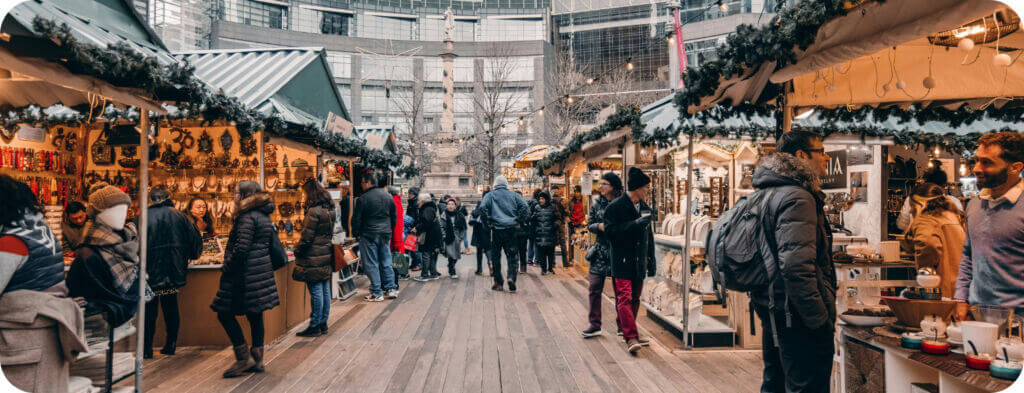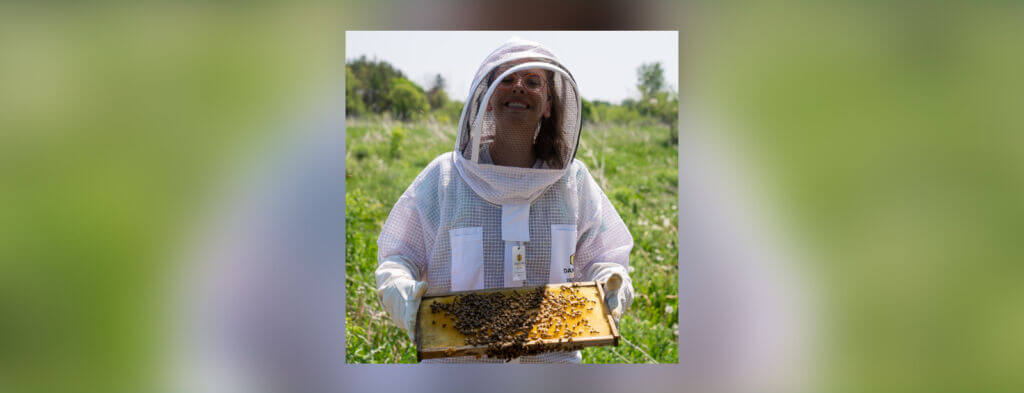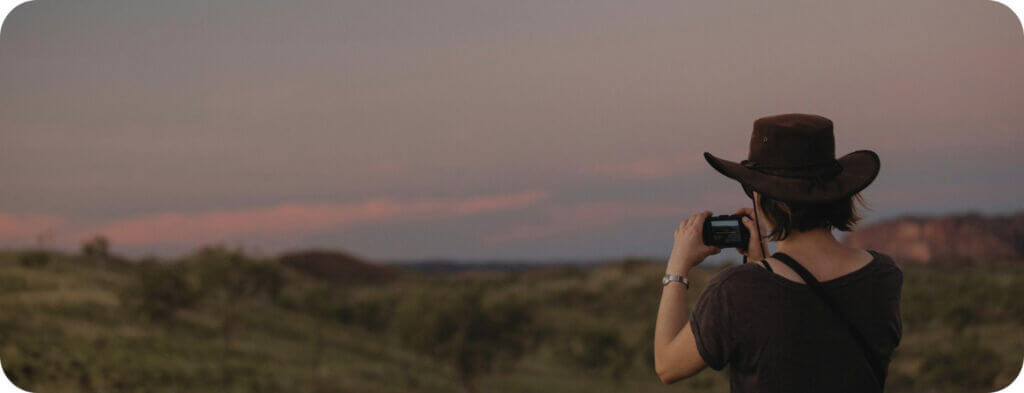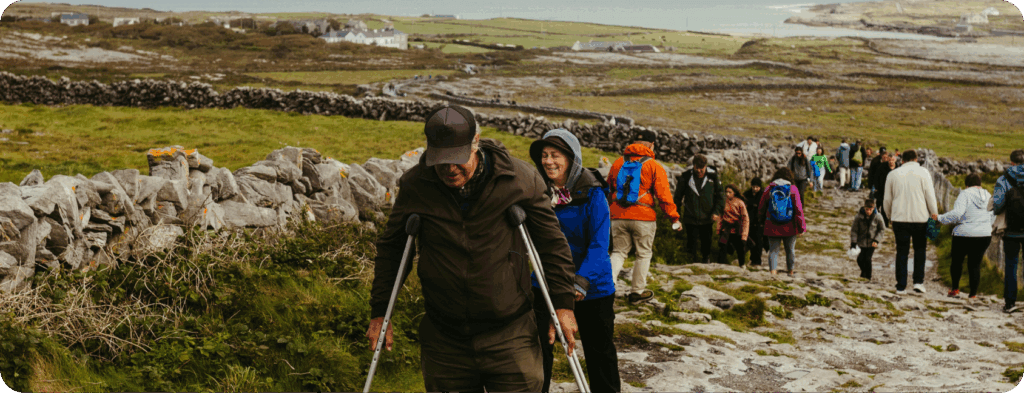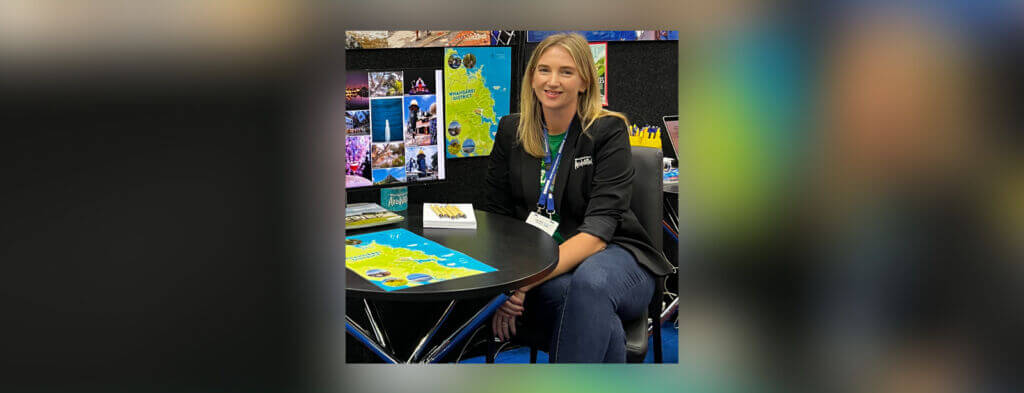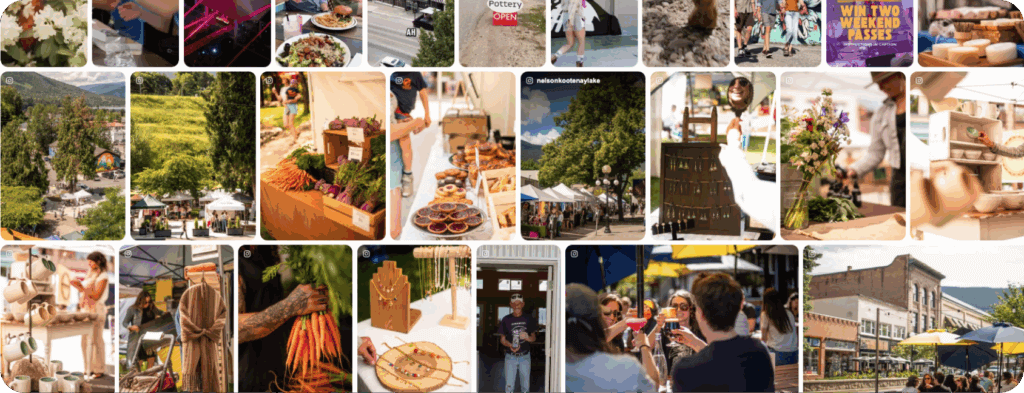As we adjust to the new normal of travel, how has tourism marketing changed, and how will it continue to change in the future? How does user-generated content fulfill travelers' cravings for authentic marketing experiences?
Our CEO Dan Holowack recently sat down with David Peacock of Simpleview for The Future of Tourism Podcast to discuss these questions, among other things.
We've summarized the key concepts below.
Rebuilding consumer trust
- Consumer trust has rapidly changed. Rebuilding consumer trust at each stage of recovery—local, regional, and international—will take a coordinated effort across several different stakeholders.
A coordinated effort between stakeholders
- DMOs have an opportunity to get back to their roots as destination builders. This means not only sharing messages of health and safety but also acting as a human voice behind how locals can have new experiences in their communities.
The tools for stakeholder engagement
- Many customers like Visit Indy are using CrowdRiff to create galleries celebrating local heroes and business owners. This is a way to connect with the community and also support stakeholders.
- Supporting stakeholders is about driving traffic to them, and making sure people know who's open and what they're offering.
- Connecting with the community involves collecting content that will arm you with content to fuel the next stage, where it's going to be "hyper-competitive for the early demographic of people that are prepared to travel again."
- People love authenticity, seeing how things work, and genuine, authentic moments.
- The ability for destinations to help educate and digitally enable their stakeholders is a form of leadership that's needed now more than ever.
Localhood and BC's content commonwealth
- The story format is a powerful new format of consuming information. Google has developed its own framework that has allowed anybody to build on this framework.
- CrowdRiff's Localhood provides content fuel for BC's content commonwealth. Over 50 of their partners across the province have now created over 1200 stories.
- When a Story is created, it's automatically distributed through the commonwealth, showing up wherever it's relevant.
- The stories can show up on other destinations' websites in the commonwealth, on the provincial website, and on Google Search.
Radical localism
- Many businesses are offering new services and products. The pace of local is moving so fast—how can DMOs get that information out to the community to help local businesses?
The importance of digital
- Digital is more important than ever before. Often times, digital is far cheaper than traditional marketing and far more effective. It will be crucial for travel brands and local businesses to enable digital for the long term to drive scale in a compelling way.
Full transcript:
- Introduction & CrowdRiff's beginnings
- Rebuilding consumer trust
- A coordinated effort between stakeholders
- The tools for stakeholder engagement
- Localhood and BC’s content commonwealth
- Radical localism
Introduction & CrowdRiff’s beginnings
David Peacock: Hello, and welcome to the future of tourism podcast first. I'd like to do something I've been meaning to do for weeks and that is thank our producer Alton Wells for all this great work on making this podcast happen.
My guest today is a bright young CEO who works with more than 800 destination marketing and management organizations around the world. He's a formally trained engineer whose passion led him to develop one of the most important user-generated content management companies in the tourism sector.
In 2011 Dan Holowack, CEO of CrowdRiff, was well ahead of the curve when it came to seeing the critical role of UGC in the tourism consumers’ buyer decision process.
He went further. He took those insights and sat down to build CrowdRiff. Arguably one of the top industry leaders in developing and delivering tools and processes that allow DMOs, destinations, and tourism stakeholders to leverage the massive pool of compelling imagery and stories generated by travelers.
As we come out of this crisis, the visitor more than ever will seek authentic peer-validated content to help them make travel decisions. They will look for destinations where tourism and daily life are clearly integrated and symbiotic.
And Dan is hard at work helping to make that happen for progressive destinations. Good morning, Dan. How are you? And where are you today?
As we come out of this crisis, the visitor more than ever will seek authentic peer-validated content to help them make travel decisions.
Dan Holowack: Good morning, David. And thank you for that kind introduction. It's a real pleasure to be here. You know, I'm calling in right now from my condo here in downtown Toronto, Canada. It's a nice sunny morning which means a lot especially in times like these.
DP: Let's talk about the early days of CrowdRiff. What drove you and how did you make it happen?
DH: I actually had the opportunity to join a destination marketing conference many years ago. At that time, I was working in the area of user-generated content across Twitter and some of the early social media platforms.
I went to this event where I ended up meeting a number of destination marketers and I just fell in love with the people, actually, before I even fell in love with the industry. I realized that there was a way that I could work with these amazing individuals.
It made me very curious from that moment onward, how we could take the technology that we had been building, and the belief in the wisdom of the crowd and what consumers were sharing online, and how that could apply to the travel and tourism industry.
DP: You've been working for nearly a decade to realize that vision. It would be easy and fair to say it was an early adopter proposition for the first six years of that decade.
In that early adopter world, what are some of the challenges you see as destinations shift from traditional models of communication and marketing to user-generated content? How did you manage that?
DH: Well, like any early adopter stage of something new, it's about the people that are already thinking multiple steps ahead and already believe in the core principles that are driving us.
When we hire new folks on the CrowdRiff team, I tell them the story of one of these first calls I had, which was actually with Josh Collins at Franklin Tennessee.
I remember calling and I, of course, didn't know Josh at the time. I just called him up because I had met him at this conference. I said, hey, Josh, we've created this way that we could bring in all of these photos being shared about your destination from locals and from visitors, and showcase them on a social hub or on your website. And he's like, wait a minute, Dan, you're telling me that the locals and travelers in my destination can authentically tell the story of our brand? And I was frantically writing this down as he’s saying this. I just said, yes, that's what I'm saying.
Once you find those people, you just connect and learn from them. You learn a lot from them.
And he's like wait a minute, Dan, you're telling me that the locals and travelers in my destination can authentically tell the story of our brand?
Rebuilding consumer trust
DP: UGC is being really well used in a lot of places. And your contribution to that is undeniable. In a Skift interview this week, you talked extensively about the concept of a new normal. You and I both agree that user-generated content, peer validated information, listings, all of those things are critically important.
But tell me, what do you see in that new normal? What has to change with the way we build, run, manage, deliver, and capitalize on tourism?
DH: Well, I told our team this several weeks ago and I think everybody's been talking about this, how the world is forever changed. And as we've been moving through this crisis, we have to recognize that the changes we're seeing will change our futures forever. And in many ways it is going to accelerate change, perhaps compress the amount of change that we would have seen over the next three to five years into this year specifically.
I think that consumer expectations are rapidly changing through this. So the need to build consumer trust will be extreme. We have to help consumers trust that it's safe to leave their homes, then that it's okay to walk down the street and visit a local business, then that they can get in a cab, then they can take a road trip for a weekend, then that it’s safe to spend thousands of dollars on an international flight.
We have to help consumers trust that it's safe to leave their homes, then that it's okay to walk down the street and visit a local business, then that they can get in a cab, then they can take a road trip for a weekend, then that it’s safe to spend thousands of dollars on an international flight.
Each of those stages is going to take a coordinated effort across several different stakeholders focused on building that consumer trust. And UGC as a component of that, but really what that stands for is building trust.
It’s being able to tell a story so authentically that a traveler can observe a local doing something and say if that person lives there and they're having this experience, and they did that three days ago, it feels safer to me because they know that place and they feel safe in that experience.
This crisis has been devastating, certainly. But it just created an opportunity to rebuild an industry and take all the learnings that we've had over decades and apply them. A crisis like this creates a scenario where it's a unifying force. And I think that through that, there can be a lot of positive things.
A coordinated effort between stakeholders
DP: I want to zero in on something you said because I think it's really encouraging. In the midst of this, in the current situation today (and we're talking the beginning weeks of May 2020), it's difficult for DMOs to imagine their new role.
When we throw all this at them at a time when not only are they disadvantaged because everywhere is closed, but they're looking at budgets over the next year and a half, two years that are significantly lower, they're thinking, but how would I make the shift to that now?
But you said something really interesting, and I think it's woven throughout your thinking. It's not about the DMO doing all those things, you said. It's going to take an industry. It's going to take better links between the airlines and the destination, better links between the destination and the stakeholder, better links between the civic body.
Talk a little bit about that. Where are you seeing that happening? And how’s it working?
DH: In a way, I think DMOs have an opportunity to get back to their roots. Destinations, I believe, at the core, are destination builders. And I know that when I say that you probably think economic development must be the destination builder or the municipal government. But I think that all of these organizations actually share a common goal.
The destination is afforded the privilege of being a brand that can communicate with people. I think moreso than some of those other organizations. And so they have a role now to not only start by sharing messages of health and safety locally, but the destination can act as that more human voice behind how locals can have new experiences in their communities, and what businesses are opening up.
The destination is afforded the privilege of being a brand that can communicate with people.
The DMO has a very big opportunity here to be that connector. I've always believed that DMOs sit at this intersection of sustainability, community, and tourism, which really is economic growth. And it's important that right now I think destinations are going to reconnect with that community piece, and I think that's going to be really exciting.
The tools for stakeholder engagement
DP: So let's talk about the catalytic pieces and tools that we can use to do that. Even in the middle of this crisis, it’s difficult to imagine how you begin or restart stakeholder engagement?
I think your point stands—it has to be done. The best destinations are the product of engaged communities that take an active role.
In the past, we've used a number of tools to get to that onramp. DestinationNEXT has been really helpful. We've used it at a number of situations just in Ontario alone, and it was the catalytic first piece to bring those stakeholders together, to begin that alignment, to build a network. Similarly, we used Destination Think in Stratford.
What other opportunities do you see now? As David Ogilvy said, “the consumer’s not an idiot; the consumer’s your husband or wife.” The consumer demands that now. They're going to want destinations where they trust those destinations civically, socially, and medically. So what's CrowdRiff thinking in all that?
DH: The destinations that have already placed a high priority on engaging those stakeholders have already built pathways, which they are now leveraging to have a dramatic and positive impact. But this is a crisis that creates this unifying force. And what I mean by that is at this moment, nearly all of your stakeholders have the same problem at the same time.
And so, instead of going to your stakeholder and saying, hey, do you have this problem? We're going to launch a campaign to help 12 percent of you. It's like, no, we all have the same problems. Those are your customers, of course, so you can be there for your partners at the moment where they need you most, and when they need you in the most unifying way.
With CrowdRiff, what we're seeing is a lot of people are creating galleries of photos and videos that are celebrating local heroes. They are business owners that are doing some incredibly creative things, really just heartwarming things to keep their businesses running and operating.
With CrowdRiff, what we're seeing is a lot of people are creating galleries of photos and videos that are celebrating local heroes.
They're also connecting with the community. I recently saw Visit Indy do something where they posted a page where you could make a video about the first thing you wanted to do when things started to reopen. They've had people and families and business owners uploading this original video content for the destination.
In one case, it's how do you support your stakeholders? How do you drive traffic to those stakeholders? How do you make sure you know who's open what they're offering? Many of them change their menus, and the products they're offering.
The second piece is, how do you connect with your community in a way that arms you with the content that is going to propel you through that final thrive and grow stage, where it's going to be hyper-competitive for the early demographic of people that are prepared to travel again.
DP: You and I both grew up in and around Toronto and we know Citytv. Back in the eighties, they had this cool presentation of taking you behind the scenes showing the camera in the shot and showing the newsroom working.
The matter is, working there, it was because we didn't have any money. So everything was guerilla-style, but it became a really authentic presentation of a community back to itself.
When you're hearing the story of the blacksmith or the butcher or the brewer in Fort Worth, it's a little bit like going behind the curtain. And I've always found that people love to see how things work, whether it's an airplane or destination. So I understand that compelling nature. And I am more intrigued by Fort Worth when I hear about the blacksmith.
DH: I agree. The idea of the story behind the story is also the kind of thing that is hard to script.
I'll always remember this moment, there was this video from a hiking trail in Colorado. This father’s hiking with his daughter in the backpack and he just turns around and they high-five each other. And it was this really genuine moment. Those little moments that you end up capturing not because they're scripted or planned.
As I mentioned, the small businesses are doing so much to the point where some of them are thriving digitally. How many of them are opening online commerce stores? A lot of the restaurants in Toronto are offering grocery boxes.
I was trying to get a flower subscription from a local store where they grow their flowers locally. Recently, they did a flower drop at midnight. I got in there six months after midnight and all the subscriptions were gone.
On the one hand, there's of course, a lot of challenges being faced. And then a lot of these businesses are moving to Instagram. Some of them for the first time. They're building online stores for the first time. Coming back to destinations, the ability for destinations to help educate and digitally enable those stakeholders again is a form of leadership that's needed now more than ever.
The ability for destinations to help educate and digitally enable their stakeholders is a form of leadership that's needed now more than ever.
Localhood and BC’s content commonwealth
DP: You talked about the idea that most of the really great content, you can't script it. But that doesn't mean CrowdRiff’s not at work, actually trying to make ways to help you capture it when it does happen. Talk to us a little bit about that.
DH: First of all, this story format has fascinated me. The fact that you have a format here that has emerged and taken hold of consumer mindshare faster than anything else I can imagine. It's as big as the shift to mobile in my opinion.
And it's this format that beautifully combines photos and videos and text into something that is the most rapid consumption medium we have. We tried to dissect this and we couldn't find a better way to consume content than a story.
For this rapid consumption, the story format is now being leveraged across WhatsApp and Instagram and Facebook. Even someone like Netflix has these little circles across the top, like miniature stories.
I had an opportunity to join Google at a summit in Tokyo where they were talking about something new for the web. And that was where Google announced that they were going to put stories on the web.
You can literally open a website and it plays a story and it's no longer locked into Instagram or WhatsApp. It is available to play and engage with as a story on any browser, on any device, and indexed by Google. My co-founder Abhi and I thought wow, for a company that lives and breathes travel, lives and breathes visuals, this is going to be amazing.
DP: What did you develop?
DH: So you can't just take stories from, say, from WhatsApp and use those, because Google has developed their own framework for this and has open-sourced it. That means anybody can build on this framework. So what we did is we made our own way to create these stories.
I've had the opportunity to work with British Columbia for now over five years. And when I mentioned in the early days, one of the things that I recommend to all entrepreneurs is getting close to your customers and staying close to your smartest customers. They can help you paint a picture of what the future can look like.
One of the things that I recommend to all entrepreneurs is getting close to your customers and staying close to your smartest customers. They can help you paint a picture of what the future can look like.
That's true with British Columbia from five years ago, where I remember exactly where I was as a team of only six people at the time at CrowdRiff. And I was designing our Advanced Rights system and sharing the designs back and forth with BC as we critiqued it together. We kind of co-developed that into what is now our Advanced Rights Engine. And so we continued to work with that team.
One of the initiatives British Columbia put into place is this content commonwealth. And it had fascinated me because for years I believe in partnership and travel. And that comes down to a fundamental principle of just how travelers move through the ecosystem. As a traveler, you touch on everything, right? The car rental, the hotel, the restaurant, the airline.
I always believe the industry needs to be more connected. It's obviously very hard to accomplish, but I really admired how British Columbia had formed this content commonwealth. They had these key pillars of providing tools and solutions to enable their partners, insights, data, and education.
So I saw this ability to create stories, and I thought about how it could potentially become the content fuel for that content commonwealth. I knew I had to bring it to British Columbia and have that conversation with their team.
They’ve now created over 1,200 stories—not just by British Columbia, but by over 50 of their partners across the province in this unifying content ecosystem and strategy.
DP: Marsha Walden and I talk back and forth and I'm a big admirer of the fact that she has plumbed a new provincial-level organization that's focused on digitally distributed content that's authentic. You and Marsha agreeing on the content commonwealth makes a lot of sense to me.
Talk to me a little bit about the difficulties, because you have to take that now from the provincial level and you've got to manage to gently but effectively push it down right to the level of the stakeholder. And one of the things Marsha and I talked about years ago on a panel is that the last 100 feet from the DMO to the stakeholder, sometimes is the hardest.
How hard was it in BC to finally get your infiltration right to the ground?
DH: That's an excellent question and a good analogy of that last 100 feet. Those challenges exist and you have to be very alert that they exist. I think every state and province country is well aware of them.
To overcome some of those things, you need a way to deliver value fairly immediately. And obviously it has to be very easy for those partners to get engaged.
One of the many challenges we wanted to overcome was one where British Columbia can help set a theme or a key direction of content. It would be a focus on adventure and outdoors or arts and culture. Then those stakeholders across the province can make content in that direction and BC can leverage that.
But realistically, BC can't repost every single photo or story on Instagram that every other stakeholder is creating. So we needed to remove the bottleneck, we needed to basically change that from being a bottleneck to being more of a flow-through of content.
What I mean by that is instead of having one or two people hand-picking what they're going to use from partners, instead, the content commonwealth with the stories has creative story portals on every digital property. And so when Tofino or Kamloops or Kelowna make a story, it automatically gets distributed through the content commonwealth, and it shows up wherever it's relevant. That was one key step.
When Tofino or Kamloops or Kelowna make a story, it automatically gets distributed through the content commonwealth, and it shows up wherever it's relevant.
The other is being able to have an early set of partners that start to create stories and we share reports back. We would onboard them and cohorts, like 10 partners than another 10, then another 20. And as we share the data back, we shared here's how many people have seen stories. And here's how many stories have been completed with views.
So if you were a partner that hadn't made any, you're thinking I should probably make one of these. Because if I make a story, it could show up on my website, on these other websites, on the provincial website, and it could show up on Google Search.
So there has to be that type of feedback loop of saying these actions result in value, and that value has to be fairly close in time because these partners are extremely busy with their own priorities.
Radical localism
DP: And that leads me into rounding out this whole discussion. You wear the toque of radical localism sometimes. Talk to me about radical localism.
DH: I first heard Rafat at Skift use the word radical localism and he said he’s heard about it and read about it elsewhere also. But I have become fascinated with this idea of radical localism or like this new localism we find ourselves in.
I think it started when I felt a strong connection to all these businesses that we're closing. It made me extremely sad and I don't know if maybe that's because for me building a business and the feeling that it could all be taken away do to something that I had no control over. It's terrifying. And so the fact that we could lose 20 to 30 percent of our small businesses or in the restaurant industry, 40 percent of those businesses, really affected me.
I started to think a lot about my own neighborhood in Toronto. And I started to really pay attention to what those businesses were doing. And I realized that the pace of change was huge. Businesses that I used to go to get a great pizza, they had figured out a way to make and flash freeze their pizzas so that you could make them at home.
Businesses that I used to go to get a great pizza, they had figured out a way to make and flash freeze their pizzas so that you could make them at home.
The place I used to go to for brunch, I now went to and a little window popped open and they handed me a bag of some of my favorite things to make it home. And so I thought the pace of this change is so extreme that it’s moving at the pace of local, if you want to call it that.
But how can you get that information out into the rest of the local population here to help these businesses?
The importance of digital
DP: You talk about the piece of that change being overwhelming and shocking and I purport this: the pace of that change would not be nearly so overwhelming and shocking had the technology that underlies it has been sitting in place for 10 years. And we all have this guilty recognition of the fact we didn't really leverage it to the level that we could. We all wake up in the middle of this knowing we could have been more digital, whether this is our first conference call or attaching a Google Doc.
I think one of the resets coming out of this is we all get that being better at digital is like being better at tennis. You have to practice, you have to do it.
In terms of a new world order where we recognized the importance of localhood and digital, I see great potential because as you and I have been advocating for years, that digital interface is far cheaper than traditional marketing. And we both believe, I know this from our discussions, that it's also far more compelling.
DH: I think this is creating an environment where digital becomes essential. Pursuing digital and pursuing efforts around community partnership and digital were things that could have taken a second priority in the past. Now we're an environment where they must become a top priority and they have become essential.
I've talked to destinations where it's likely that budgets won't return to the way that they were in the ability to spend on massive brand campaigns. And so how these destinations are looking at scale now is through digital and through community.
They’re thinking about what can we put in place digitally that enables that scale and allows it to drive that more natural word of mouth with that in a more compelling anyway.
And so the consumer is also coming to expect this more and more. As we've been sheltered in our homes and we've been online, we've been communicating with businesses a lot more through Instagram's direct messaging.
We've been watching more content online and we've come to expect every product, service or level of entertainment we need to start from digital. And then as we go through this jagged recovery, we'll move back out into the real world as well. But it, we're not going to lose that expectation of digital.
DP: And I put parentheses around that and say consumers have been far more digital than we've been reacting to for quite some time. The consumer was probably asleep to it, but by the same token they were completely immersed in digital buying and we weren't selling where they were shopping necessarily.
DH: Agreed. I think the gap existed. It just wasn't as obvious to us as it suddenly is now. And then the environment that we find ourselves in also just necessitates taking this step.
DP: As we close this out, tourism is a vital and precious industry. It's a massive driver of economic development around the world. And at the same time, it's a personally fulfilling and mind-expanding part of our existence. So, in closing, what key message do you have for all of us, all of us together in this vital and precious industry?
DH: We truly have an opportunity to rebuild this industry, rebuild it toward a vision for the future that I think we have all we've all believed in for many years. And it's a time where we will either move ahead at rapid speed together or we will fall behind quickly, and it's a choice we need to make as an industry. And I truly believe that we are going to be moving ahead quickly together and driving a mentor positive change through this.
Transcript edited for length.
